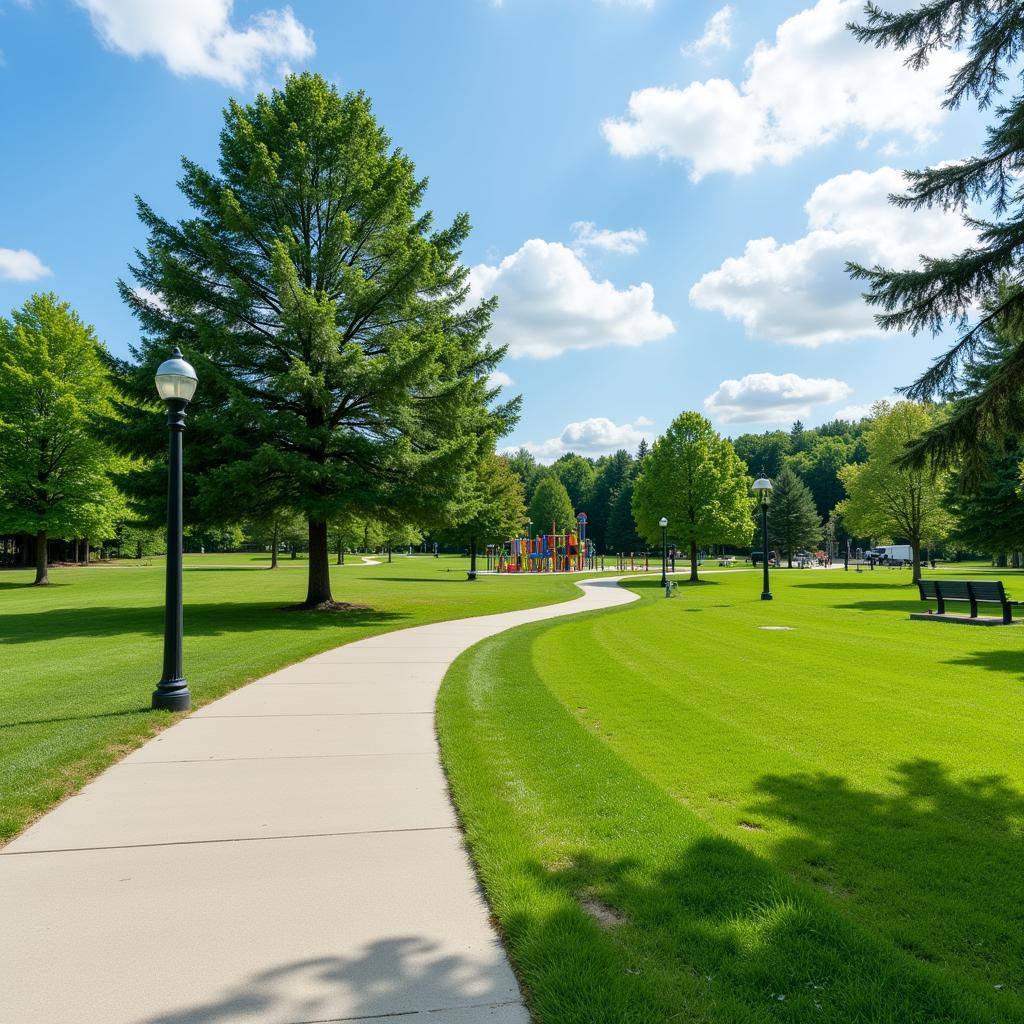Parks and gardens are common topics in IELTS Speaking tests, particularly in Part 1 and Part 2. As an examiner, I’ve noticed this theme appears frequently and tests candidates’ ability to describe locations, express personal preferences, and discuss environmental issues.
Similar to describe a favorite place in your country to relax, this topic allows candidates to showcase their vocabulary and fluency in English.
Part 1: Introduction and Interview Questions
Common questions include:
- Are there many parks in your city?
- How often do you visit parks?
- What activities do people usually do in parks?
- Do you prefer indoor or outdoor activities?
Sample answer (Band 8-9):
“There are numerous public parks in my city, and I make it a point to visit them at least twice a week. People typically engage in various activities like jogging, practicing yoga, or simply unwinding after a hectic day. I personally favor outdoor activities as they help me stay connected with nature.”
Part 2: Cue Card
Describe a park or garden in your hometown
You should say:
- Where it is located
- What it looks like
- What facilities it has
- And explain why you like this place

Sample answer (Band 8-9):
“I’d like to tell you about Unity Park, which is strategically located in the heart of my city. This sprawling green space covers approximately five hectares and has been meticulously maintained for over two decades.
The park boasts an impressive array of facilities, including well-maintained jogging tracks, outdoor fitness equipment, and a picturesque lake where people can feed ducks. What sets it apart is its stunning botanical garden section, which showcases various indigenous plants and flowers.
I’m particularly drawn to this park because it serves as an urban oasis, offering a perfect escape from the city’s hustle and bustle. The way it harmoniously blends natural elements with modern amenities makes it stand out from other recreational spaces.”
For those interested in describe a natural place where you feel at peace, similar descriptive techniques can be applied.
Part 3: Discussion Questions
Q: How have parks in your country changed over the years?
Sample answer (Band 8-9):
“Parks have undergone significant transformation in recent decades. They’ve evolved from simple green spaces to multifunctional recreational areas that cater to diverse needs. Modern parks now incorporate smart technology, such as solar-powered lighting and automated irrigation systems, while maintaining their ecological value.”
Q: What role do parks play in modern urban planning?
Sample answer (Band 8-9):
“Parks play a crucial role in urban development by serving as green lungs for cities. They contribute significantly to environmental sustainability and promote community well-being. Urban planners now prioritize creating these spaces to enhance quality of life and combat climate change.”
Similar discussions can be found in describe a park you enjoy visiting in your city.
Key Vocabulary and Expressions
- Meticulously maintained /məˈtɪkjʊləsli meɪnˈteɪnd/ – carefully kept in good condition
- Sprawling /ˈsprɔːlɪŋ/ – spreading over a large area
- Urban oasis /ˈɜːbən əʊˈeɪsɪs/ – peaceful place in a busy city
- Harmoniously /hɑːˈməʊniəsli/ – in a well-balanced way
- Indigenous /ɪnˈdɪdʒɪnəs/ – naturally existing in a place
Examiner’s Tips
- Use specific examples and personal experiences
- Include sensory details in descriptions
- Demonstrate range of vocabulary related to nature and environment
- Practice speaking about different aspects of parks and gardens
- Develop responses that show both depth and breadth of language
For additional practice, consider describe a scenic spot where you enjoy spending time alone.